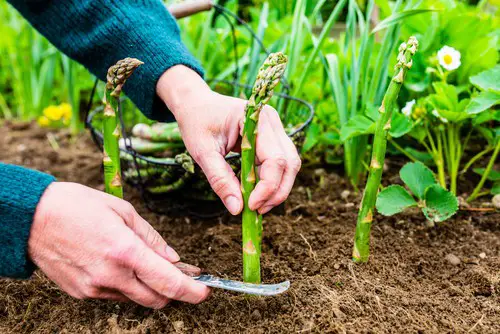Asparagus is a popular vegetable known for its unique flavor and health benefits. It is a perennial plant that can produce delicious spears for up to 15 years if grown under the right conditions. However, many people wonder if they can plant asparagus from the store-bought variety.
The short answer is no. Asparagus stalks sold in grocery stores are typically harvested before they have a chance to develop roots. As a result, they cannot be used to grow new plants. However, there are other ways to grow asparagus that are more effective.
Key Takeaways
- Asparagus stalks sold in grocery stores cannot be used to grow new plants.
- Asparagus is a perennial plant that can produce delicious spears for up to 15 years if grown under the right conditions.
- There are other ways to grow asparagus that are more effective than using store-bought stalks.
Check out these other top posts in this category:
- Can You Plant Alfalfa and Clover Together?
- Can You Plant a Tree on a Slope?
- Can You Plant a Tree in Winter?
Understanding Asparagus
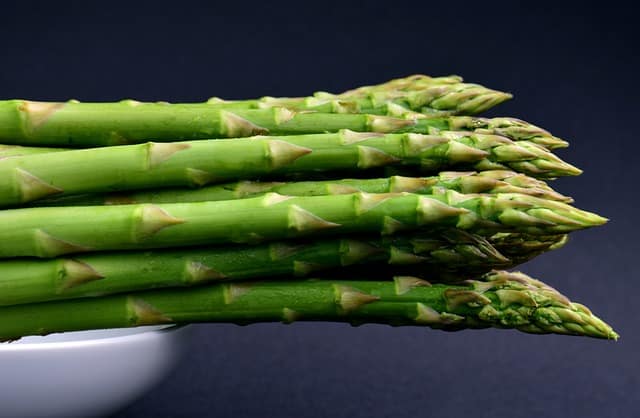
Asparagus is a perennial vegetable that belongs to the lily family. It is a hardy plant that can grow up to 5 feet tall and can produce spears for up to 20 years. Asparagus is a dioecious plant, meaning that male and female flowers are found on separate plants.
Male asparagus plants are preferred for commercial cultivation because they produce larger and more uniform spears. Female plants, on the other hand, produce smaller and thinner spears and are less common in the market. However, female plants are important for seed production.
Asparagus spears can be green, white, or purple in color, depending on the variety. The texture and flavor of asparagus can vary depending on the variety, age, and growing conditions.
For example, the Purple Passion variety has a sweeter and nuttier flavor, while the Mary Washington and Martha Washington varieties have a more traditional asparagus flavor.
The Jersey variety is a popular type of asparagus that is known for its large and tender spears. The Jersey Giant, Jersey Knight, and Jersey Supreme are some of the most common cultivars of the Jersey variety.
When buying asparagus from the store, it is important to look for firm and straight spears with tightly closed tips. The thickness of the spear does not necessarily indicate the quality or flavor of the asparagus. Asparagus can be grown from seeds, but it is more common to plant one-year-old crowns.
The Basics of Planting Asparagus
Planting asparagus is a simple process that requires some preparation beforehand. Asparagus can be grown from seeds or crowns, but crowns are the most common option for home gardeners.
Before planting, it is important to choose a sunny location with well-draining soil. Asparagus thrives in full sun and requires at least 6 hours of direct sunlight per day. The soil should be loose, fertile, and rich in nutrients. Adding compost to the soil can improve its structure and nutrient content.
When planting asparagus crowns, dig trenches that are 6-8 inches deep and 12-18 inches wide. Space the trenches 3-4 feet apart to allow enough room for the plants to grow.
Place the crowns in the trenches, with the buds facing up, and cover them with 2-3 inches of soil. As the plants grow, fill in the trenches with soil until they are level with the surrounding soil.
It is important to keep the soil moist but not waterlogged. Overwatering can lead to root rot and other diseases. Sandy soil may require more frequent watering, while heavy clay soil may need less. The soil pH should be between 6.5 and 7.5 for optimal growth.
Fertilizer can be added to the soil before planting and throughout the growing season. A balanced fertilizer with equal amounts of nitrogen, phosphorus, and potassium can provide the necessary nutrients for healthy growth. However, too much nitrogen can lead to excessive foliage growth at the expense of root growth.
Growing Asparagus
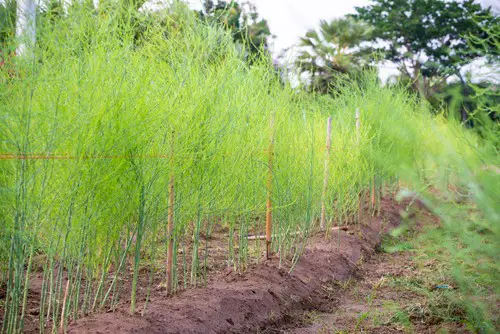
Asparagus is a perennial vegetable that can be grown from seed or seedlings. While it is possible to grow asparagus from store-bought asparagus, it is not recommended as the asparagus you buy from the store is often treated with chemicals to prevent sprouting.
To grow asparagus, it is important to choose a location with well-draining soil that receives full sun. Asparagus can be grown in a nursery bed for the first year before being transplanted to a permanent location.
Planting asparagus seeds is a cost-effective way to grow asparagus, but it can take up to three years before the plants produce a harvest. Seedlings can be transplanted to a permanent location after one year, and they will produce a harvest in the second year.
Watering is important for the growth of asparagus. It is recommended to water the plants once a week with a watering can, providing about an inch of water each time.
Asparagus grows best in soil with a pH between 6.5 and 7.5. It is important to test the soil before planting and adjust the pH if necessary. Adding compost or well-rotted manure to the soil can also help improve the soil quality and provide nutrients for the plants.
Harvesting Asparagus
Asparagus is a perennial vegetable that can be harvested for up to 20 years when planted and cared for properly. Harvesting asparagus is a delicate process, and it is important to know when to pick the spears and how to do it correctly.
When it comes to harvesting asparagus, timing is everything. The best time to start harvesting is when the spears are around 6 to 10 inches tall and have a diameter similar to that of an index finger. This usually happens in the spring, around April or May, depending on the region.
To harvest asparagus, the spears can be snapped off by hand or cut with a knife. Snapping is the preferred method as it breaks the spears cleanly at a tender point. To do this, hold the spear near the base and gently bend it until it snaps. The remaining stub should be left in the ground.
If cutting with a knife, it is important to use a clean, sharp knife and to clean it between cuts to prevent the spread of diseases from plant to plant. Cut the spear at soil level, being careful not to damage any surrounding spears.
It is important to not over-harvest asparagus, as this can damage the plant and reduce future yields. Stop harvesting when the spears become thin and spindly, usually around 6 to 8 weeks after the initial harvest. This allows the plant to store energy for the next growing season.
Challenges in Growing Asparagus
Growing asparagus is not without its challenges. While it is a hardy perennial that can produce for up to 20 years, it requires a lot of patience and attention to detail. Here are some of the challenges that growers face when planting asparagus:
1. Pests and Diseases
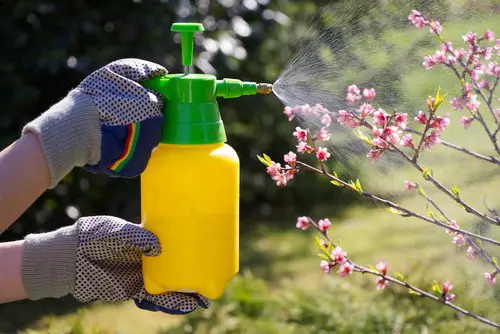
One of the biggest challenges in growing asparagus is dealing with pests and diseases. Asparagus beetles are a common pest that can cause significant damage to the plant. They feed on the foliage and can cause the plant to weaken and die.
Other pests that can be a problem include slugs, snails, and cutworms. Asparagus rust is a fungal disease that can also be a problem, causing yellow spots on the leaves and reducing the plant’s vigor.
2. Weeding
Asparagus is a slow-growing plant that takes a few years to establish. During this time, it is important to keep the area around the plant free of weeds. Weeds can compete with the plant for nutrients and water, reducing its growth and yield. Hand weeding is the best way to control weeds around asparagus, as herbicides can damage the plant.
3. Producing Seeds
Asparagus plants produce seeds, but they are not true to type. This means that the offspring will not have the same characteristics as the parent plant. If you want to propagate asparagus, it is best to do so by dividing the roots. This will ensure that the new plants have the same characteristics as the parent plant.
4. Harvesting
Asparagus needs to be harvested at the right time to ensure the best flavor and quality. The first year after planting, the plant should not be harvested at all to allow it to establish. In subsequent years, the plant can be harvested for a few weeks in the spring.
It is important to stop harvesting when the spears start to get thin, as this indicates that the plant is putting its energy into producing seeds.
Store-Bought Asparagus

Asparagus is a delicious and nutrient-rich vegetable that can be easily grown at home. But can you plant asparagus from the store? The answer is yes, you can. In fact, many people have successfully grown asparagus from store-bought asparagus.
When buying asparagus from the store, it is important to choose fresh, healthy-looking stalks. Look for stalks that are firm, straight, and have tight tips. Avoid stalks that are wilted or have soft spots.
To grow asparagus from store-bought stalks, follow these simple steps:
- Cut off the bottom inch of the stalks, where the woody part ends and the tender part begins.
- Place the cut-off stalks in a glass or jar filled with about an inch of water.
- Put the jar in a sunny spot and change the water every other day.
- After a week or two, you should start to see roots growing from the bottom of the stalks.
- Once the roots are about an inch long, you can plant the stalks in soil.
It is important to note that not all store-bought asparagus will grow successfully. Asparagus that has been treated with chemicals or has been sitting in the store for too long may not sprout. It is also important to keep in mind that growing asparagus from store-bought stalks is an experiment and may not always be successful.
Asparagus as a Perennial Plant
Asparagus is a perennial plant that can provide a bountiful harvest for years to come. It is a popular choice for gardeners who are looking for a low-maintenance crop that requires little attention once established. Asparagus is a member of the lily family and is known for its delicious, tender shoots that are harvested in the spring.
Perennial plants are those that live for more than two years, and asparagus is no exception. Asparagus plants can live for up to 20 years with proper care. This makes them an excellent choice for gardeners who want to grow a crop that will provide them with a reliable harvest year after year.
Asparagus is also a popular choice for those who are interested in growing perennial vegetables. Perennial vegetables are those that come back year after year without needing to be replanted. Asparagus fits this description perfectly, as it will continue to produce shoots year after year without needing to be replanted.
As a perennial crop, asparagus is a great choice for those who want to grow a crop that requires minimal effort. Once established, asparagus requires little maintenance beyond regular watering and occasional fertilization.
This makes it an excellent choice for gardeners who are looking for a low-maintenance crop that will provide them with a reliable harvest year after year.
Benefits of Homegrown Asparagus
Homegrown vegetables are becoming increasingly popular as people become more conscious of their health and the environment. Asparagus is one of the most popular homegrown veggies, and for good reason. Here are some benefits of growing asparagus in your home garden:
1. Freshness
Homegrown asparagus is much fresher than store-bought asparagus, which is often harvested weeks before it reaches the supermarket. Freshness is important because asparagus loses its flavor and nutrients quickly after it’s harvested.
By growing your own asparagus, you can ensure that you’re getting the freshest, most flavorful, and nutrient-dense asparagus possible.
2. Cost-effective
Growing your own asparagus can be a cost-effective way to enjoy this delicious vegetable. While it may require an initial investment in seeds or crowns, homegrown asparagus can produce for up to 15 years, making it a worthwhile investment.
Plus, you won’t have to keep buying asparagus from the store, which can be expensive, especially during the off-season.
3. Nutritious
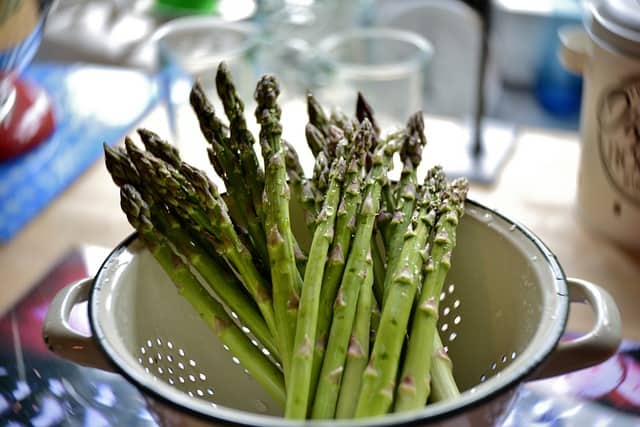
Asparagus is a nutrient-dense vegetable that’s packed with vitamins and minerals, including vitamins A, C, E, and K, as well as folate, iron, and fiber. Homegrown asparagus is even more nutritious than store-bought asparagus because it’s fresher and hasn’t been exposed to pesticides or other chemicals.
4. Sustainable
Growing your own asparagus is a sustainable way to enjoy this delicious vegetable. Homegrown veggies don’t require transportation or packaging, which reduces your carbon footprint. Plus, growing asparagus in your home garden can help support pollinators and other beneficial insects, which is good for the environment.
The Role of Mulch in Asparagus Growth
Mulch plays a crucial role in the growth of asparagus plants. It helps to retain moisture in the soil, suppress weed growth, and regulate soil temperature. Mulch also helps to prevent soil erosion and provides a layer of protection for the asparagus crowns during the winter months.
When planting asparagus, it is recommended to use a trench and fill process. This involves digging a trench approximately 8-10 inches deep and 12-18 inches wide.
The asparagus crowns are then placed at the bottom of the trench, with the roots spread out and covered with soil. As the plants grow, the trench is gradually filled in with soil until it is level with the surrounding soil.
Once the trench is filled, it is important to add a layer of mulch to the soil surface. This can be done using a variety of materials such as straw, leaves, or grass clippings. The mulch should be applied to a depth of 2-3 inches and should not touch the asparagus stems.
Mulch should be reapplied each year in the early spring before the asparagus plants begin to grow. This helps to replenish the mulch layer and maintain its benefits throughout the growing season.
Importance of Chemicals in Asparagus Growth
Asparagus is a nutrient-rich vegetable that requires specific chemicals to grow healthy and strong. These chemicals play a vital role in the growth and development of the plant, and their presence or absence can significantly impact the yield and quality of the asparagus harvest.
1. Macronutrients
Macronutrients are essential chemicals that asparagus requires in large quantities to grow. These include nitrogen, phosphorus, and potassium.
Nitrogen is necessary for the development of foliage and stem growth, while phosphorus is needed for root growth and development. Potassium is essential for overall plant health, including disease resistance and water regulation.
2. Micronutrients
In addition to macronutrients, asparagus also requires micronutrients in smaller amounts for optimal growth. These include iron, manganese, zinc, and copper. These micronutrients are involved in various metabolic processes, including photosynthesis, respiration, and enzyme activation.
3. pH Levels
Asparagus requires a specific pH level to grow optimally. The ideal pH level for asparagus growth is between 6.5 and 7.5. If the soil pH is too acidic or alkaline, it can negatively affect nutrient uptake and plant growth. Asparagus grown in soils with the correct pH level will have better yields and quality.
4. Fertilizers
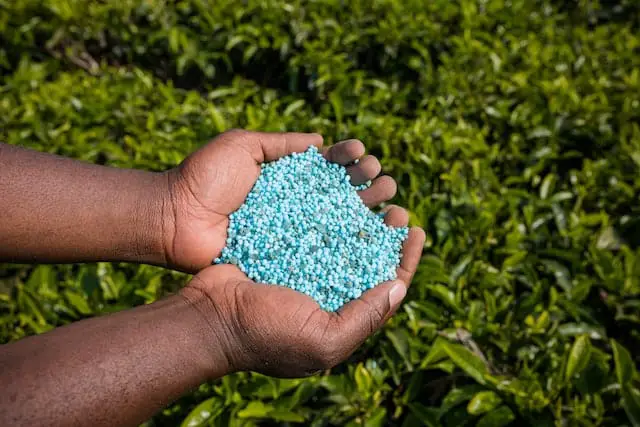
Fertilizers are an essential source of chemicals for asparagus growth. They provide the necessary macronutrients and micronutrients required for optimal growth and development. Asparagus fertilizers should be applied at specific times during the growing season to ensure the plant receives the necessary nutrients at the right time.
5. Pesticides
Pesticides are chemicals used to control pests and diseases that can negatively impact asparagus growth. They are essential for maintaining plant health and preventing yield loss. Pesticides should be used sparingly and only when necessary to avoid harming beneficial insects and pollinators.
Frequently Asked Questions
How do you regrow asparagus in water?
Regrowing asparagus in water is possible, but it is not recommended for long-term growth. To regrow asparagus in water, cut off the bottom inch of the asparagus and place it in a glass of water with the cut end facing down.
Change the water every few days and wait for the roots to grow. Once the roots are about an inch long, you can transplant the asparagus into soil.
What are asparagus crowns and how do you use them?
Asparagus crowns are the roots of the asparagus plant. They are usually purchased from a nursery or garden center. To plant asparagus crowns, dig a trench about 6 inches deep and 12 inches wide.
Place the crowns in the trench with the roots facing down and the buds facing up. Cover the crowns with soil and water them well. Asparagus crowns should be planted in the early spring.
Is it possible to grow asparagus indoors?
While it is possible to grow asparagus indoors, it is not recommended. Asparagus plants require a lot of space and sunlight to grow properly, which can be difficult to provide indoors. If you do decide to grow asparagus indoors, make sure to choose a large pot and place it in a sunny window.
What is the process for replanting asparagus?
To replant asparagus, dig up the asparagus plant and remove any dead or damaged roots. Cut the plant down to about 2 inches above the ground and replant it in a new location. Make sure to plant the asparagus in well-draining soil and water it well.
How long does it take for asparagus to grow?
Asparagus can take up to three years to reach maturity and produce a full crop. During the first year, the asparagus plant will grow a few spears, but they should not be harvested.
In the second year, the plant will produce more spears, but they should still be left to grow. By the third year, the plant should be producing a full crop of asparagus.
Can asparagus be grown from cuttings?
Asparagus can be grown from cuttings, but it is not recommended. Asparagus plants grown from cuttings are often weaker and less productive than those grown from crowns. If you do decide to grow asparagus from cuttings, make sure to choose healthy, disease-free plants and plant them in well-draining soil.

Hey, I’m Lisa and I’ve been an avid gardener for over 30 years. I love writing, talking and living in the garden! Feel free to connect with me on my socials below

